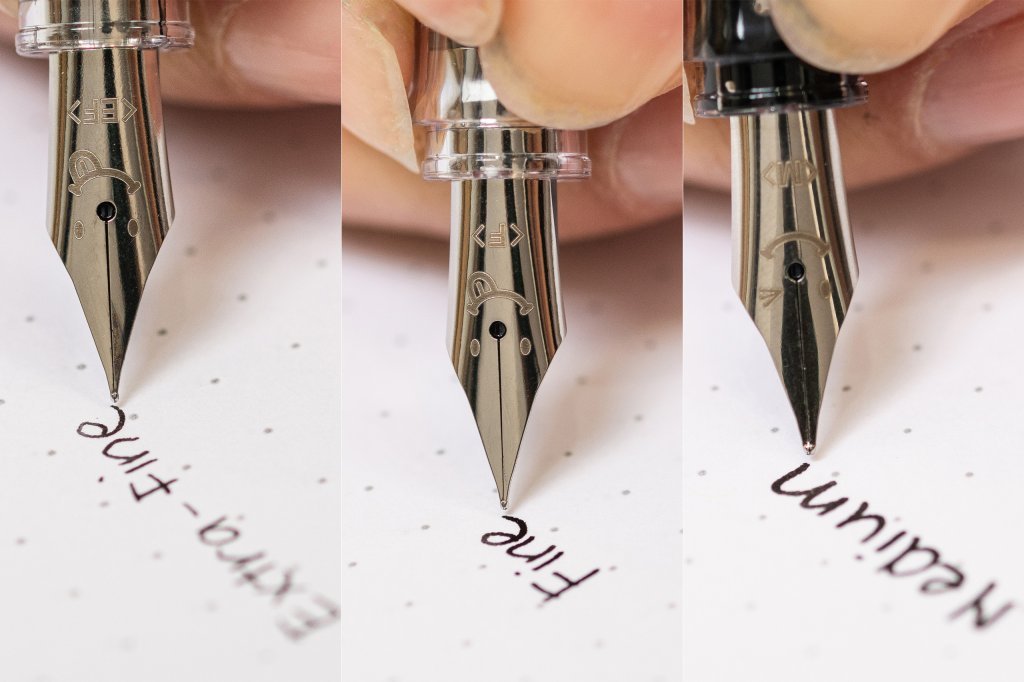Understanding Pen Nib Types, Functions, and Sizes

What Are Pen Nib Types, Functions, And Sizes?
Introduction
The nib is the heart of any writing instrument, determining how ink flows onto paper and influencing the overall writing experience. Whether you're using a fountain pen, dip pen, or calligraphy tool, understanding nib types, functions, and sizes is essential for selecting the right tool for your needs. This guide explores the different nib variations, their purposes, and how they affect writing style, precision, and artistic expression.
1. What Is a Pen Nib?
A pen nib is the metal (or sometimes plastic) tip of a pen that comes into contact with paper, controlling ink flow and shaping the written line. Nibs can be rigid or flexible, fine or broad, and are designed for different writing styles—from everyday note-taking to artistic calligraphy.
2. Types of Pen Nibs
Nibs vary widely in shape, flexibility, and material. Below are the most common types:
A. Fountain Pen Nibs
- 1.
Standard Round Nib (Fine/Medium/Broad)
- Most common for everyday writing.
- Smooth, consistent ink flow.
- Available in fine (F), medium (M), and broad (B) sizes.
- 2.
Italic Nib (Calligraphy Nib)
- Flat, rectangular tip for crisp, chiseled strokes.
- Used for formal writing and calligraphy.
- Comes in narrow (1.1mm) to wide (2.0mm+) sizes.
- 3.
Stub Nib
- Similar to italic but with rounded edges for smoother writing.
- Produces line variation without sharp edges.
- Ideal for semi-calligraphic handwriting.
- 4.
Flex Nib
- Soft metal that bends under pressure for thick and thin strokes.
- Used in vintage pens and modern calligraphy.
- Requires skill to control ink flow.
- 5.
Oblique Nib
- Angled tip for left- or right-handed writers.
- Helps reduce hand fatigue for certain grips.
- 6.
Music Nib
- Broad, three-tined nib for smooth, wet ink flow.
- Originally for writing musical notation.
- Great for expressive, bold writing.
B. Dip Pen Nibs
- 1.
Pointed Nibs (Flexible & Semi-Flexible)
- Used for copperplate and Spencerian calligraphy.
- Tines spread under pressure for dramatic line variation.
- Examples: Nikko G, Zebra G, Leonardt Principal.
- 2.
Broad-Edge Nibs
- Flat tips for italic, Gothic, and blackletter scripts.
- No flexibility—line width depends on nib angle.
- Examples: Brause, Speedball.
- 3.
Poster Nibs
- Extra-wide for bold lettering and signage.
- Often used in vintage advertising.
- 4.
Drawing Nibs
- Fine, rigid tips for detailed illustration.
- Examples: Crowquill, Mapping nibs.
C. Specialty & Modern Nibs
- 1.
Fude Nib
- Bent upward for variable line width (thin to thick).
- Popular in Asian calligraphy and sketching.
- 2.
Falcon/FA Nib (Pilot’s Soft Fine)
- Semi-flexible nib for expressive writing.
- 3.
Architect Grind
- Custom-ground nib for thin verticals and broad horizontals.
- Used in technical writing and design.
- 4.
Needlepoint Nib
- Ultra-fine tip (0.1mm–0.3mm) for precision.
- Used for micro-writing and detailed artwork.
3. Nib Functions & Writing Styles
Different nibs serve distinct purposes:
| Nib Type | Best For | Ink Flow | Skill Level |
|---|---|---|---|
| Round (F/M/B) | Everyday writing, notes, signatures | Consistent | Beginner |
| Italic/Stub | Calligraphy, decorative writing | Moderate | Intermediate |
| Flex Nib | Vintage scripts, expressive writing | Variable | Advanced |
| Pointed Dip | Copperplate, Spencerian calligraphy | Wet | Advanced |
| Broad-Edge | Gothic, blackletter, italic scripts | Controlled | Intermediate |
| Fude | Asian calligraphy, sketching | Adjustable | Intermediate |
| Needlepoint | Micro-writing, technical drawing | Fine | Expert |
4. Nib Sizes & Line Widths
Nib sizes determine line thickness:
A. Fountain Pen Nib Sizes
- Extra Fine (EF): 0.2mm–0.3mm (precise, thin lines)
- Fine (F): 0.4mm–0.5mm (standard for daily writing)
- Medium (M): 0.6mm–0.7mm (smooth, balanced flow)
- Broad (B): 0.8mm–1.0mm (bold, expressive strokes)
- Double Broad (BB): 1.2mm+ (signature and artistic use)
B. Calligraphy & Italic Nib Sizes
- 1.1mm Italic: Classic calligraphy width
- 1.5mm–2.0mm: Bold headers, Gothic scripts
- Music Nib (~1.9mm): Wet, broad strokes
C. Dip Pen Nib Widths
- Fine Pointed (e.g., Nikko G): 0.3mm–0.5mm
- Medium Flex (e.g., Zebra G): 0.5mm–1.0mm (flexible)
- Broad-Edge (e.g., Brause 3mm): 1.5mm–5.0mm
5. Choosing the Right Nib
Consider these factors when selecting a nib:
- 1.
Writing Purpose
- Daily Use? → Round nib (F/M).
- Calligraphy? → Italic, flex, or dip nib.
- Drawing? → Needlepoint or crowquill.
- 2.
Handwriting Style
- Small handwriting? → Extra Fine/Fine.
- Bold, expressive script? → Broad or flex nib.
- 3.
Paper Type
- Thin paper? → Fine nib (less bleed).
- Thick/coated paper? → Broad or stub nib.
- 4.
Skill Level
- Beginners: Start with a smooth round nib.
- Advanced users: Experiment with flex and specialty nibs.
6. Maintaining Pen Nibs
Proper care extends nib life:
- Clean regularly (especially dip pens) to prevent clogging.
- Store properly—avoid moisture and pressure damage.
- Adjust ink flow if skipping occurs (gentle nib alignment).
Conclusion
Pen nibs are more than just metal tips—they define writing personality, precision, and artistic potential. Whether you need a reliable everyday writer, a calligraphy tool, or a specialized drawing nib, understanding nib types and sizes helps you make the best choice. Experiment with different nibs to discover which one suits your hand and style best.
By mastering nib selection, you unlock new possibilities in handwriting, art, and creative expression. Happy writing!